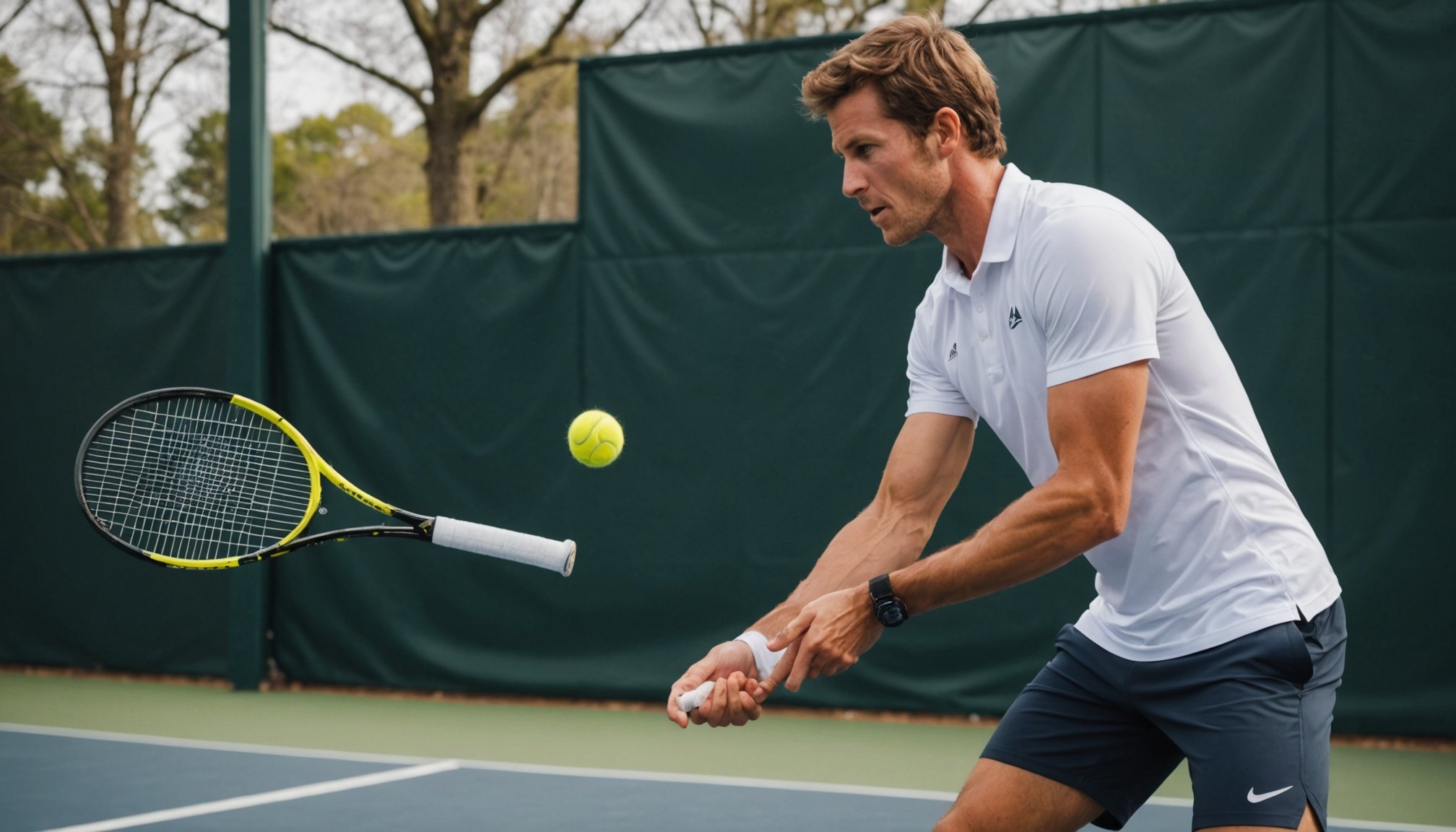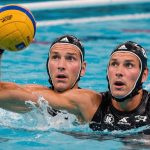Importance of Off-Season Training for Tennis Players
For tennis players, off-season training plays a pivotal role in enhancing their overall performance for the subsequent season. But what makes these training periods so essential?
An effective off-season training regimen offers numerous benefits. It allows players to focus on areas that need improvement, such as strength, endurance, and technical skills, without the immediate pressure of competition. By honing these aspects during the off-season, players return to the court more prepared and adaptable to the demands of the sport.
In the same genre : Unlocking Superior Flexibility: Top Strategies for Enhancing Mobility in Gymnasts
Tennis performance significantly improves with consistent off-season training. Players who dedicate time to developing their abilities notice better on-court agility, quicker reflexes, and increased stamina. These improvements translate to enhanced gameplay during matches, providing a competitive edge.
Moreover, the relationship between off-season training and injury prevention is profound. Regular, structured training sessions help in strengthening muscles and joints, reducing the risk of injuries when the season commences. Players remain agile and fit, maintaining their competitive spirit while minimizing downtime due to injuries.
This might interest you : Mastering Carbohydrate Strategies: A Cyclist”s Guide to Peak Performance Nutrition
Ultimately, off-season training is a cornerstone of player development. It cultivates a resilient mindset, preparing athletes both physically and mentally, allowing them to remain competitive and excel in their sport.
Strength Training Adjustments
Making adjustments in strength training can lead to significant muscle gains and aid in injury prevention. A few strategic changes to your routine can greatly enhance your progress.
Incorporating Functional Exercises
Integrate functional exercises into your regimen to improve overall body coordination and strength. These exercises mirror everyday activities, contributing to a more robust physique. Think squats and lunges, which not only boost muscle but also enhance stability and balance.
Targeting Key Muscle Groups
Targeting specific muscle groups is essential for achieving balanced muscle gains. Focus on larger muscle groups, like the chest, back, and legs, while ensuring smaller muscles aren’t neglected. This holistic approach fosters optimal strength and functionality.
Balancing Upper and Lower Body Workouts
Balance is crucial when designing your workouts. Ensure you incorporate both upper and lower body strength training to prevent imbalances that could lead to injuries. Compound movements such as deadlifts and bench presses are vital for strength and stability.
Incorporate exercises that enhance power and explosiveness, like jump squats. A diverse workout plan ensures all muscle groups develop evenly, contributing to effective injury prevention. Adopting a well-rounded approach not only strengthens musculature but also safeguards against potential strains.
Conditioning for Endurance
Building conditioning is pivotal to enhancing tennis performance. It’s not just about physical power but also about enduring lengthy matches. Developing tennis fitness and stamina through appropriate conditioning routines is key to outlasting opponents.
Aerobic vs Anaerobic Training
To optimise stamina, it’s important to differentiate between aerobic and anaerobic training. Aerobic exercises like long-distance running help enhance overall endurance by improving the body’s oxygen utilisation over time. In contrast, anaerobic training, such as sprinting, focuses on high-intensity bursts of energy, which is critical for short, intense rallies.
High-Intensity Interval Training (HIIT)
High-Intensity Interval Training (HIIT) is highly effective for boosting stamina. Its alternating phases of intense activity and short rest periods mirror the stop-start nature of a tennis match. HIIT improves conditioning rapidly, enabling players to sustain energy throughout a match.
Sport-Specific Conditioning Drills
Tailoring workouts to simulate match conditions considerably benefits a player’s tennis fitness. Drills focused on replicating the intensity of matches can lead to improved performance. Incorporating agility drills enhances court movement, allowing players to respond swiftly. The benefits of varied training intensities cannot be overstated, as they contribute to all-rounded conditioning essential for competitive tennis.
Skill Development Focus
In the realm of tennis, developing technical proficiency through structured training is vital. Effective skill development strategies often hinge on targeted drills designed to elevate aspects of a player’s game. Whether honing a precise serve or refining footwork, these tennis drills form the backbone of practice sessions.
Emphasis on Weaknesses
An integral part of skill development involves identifying and focusing on personal weaknesses. Players should analyse their gameplay to determine areas requiring improvement. Concentrating efforts on these weaker aspects often results in a more well-rounded and competitive athlete.
Variety of Drills to Improve Skills
Regularly incorporating a variety of drills can significantly boost a player’s skill set. For instance, practicing cross-court shots can improve accuracy and control, while endurance drills enhance stamina during long matches. Integrating diverse exercises ensures holistic development and keeps training engaging.
Incorporating Video Analysis
Utilizing video analysis is a transformative method in modern training, enabling players to evaluate performance comprehensively. Recording practice sessions allows athletes to visually identify errors or inconsistencies, facilitating targeted corrections. This technological approach promotes a deeper understanding of technical proficiency and tracks the progression of skill development over time.
Mental Preparation Techniques
Cultivating mental toughness is essential for athletes striving to achieve peak performance. A strong competitive mindset can often be the difference between success and failure. Drawing from sports psychology, several strategies can enhance focus and concentration, helping athletes remain calm and poised.
One popular technique is visualization—a mental exercise where athletes imagine themselves succeeding in specific scenarios. This practice helps prepare the mind for real-life competition, fostering a sense of familiarity and confidence in the face of challenges. Consistently engaging in mental rehearsal can reinforce desired performance outcomes, enabling athletes to navigate high-pressure situations with ease.
Overcoming performance anxiety is another critical aspect of preparation. Techniques such as deep breathing, progressive muscle relaxation, and mindfulness can reduce stress levels, allowing athletes to maintain focus during competition. Incorporating these practices regularly can build resilience, enabling athletes to approach competitions with more confidence and less anxiety.
Athletes benefit greatly from setting specific, achievable goals. Goal-setting not only provides a clear direction but also reinforces motivation and commitment. By setting both short-term and long-term objectives, athletes can track their progress and stay motivated, ultimately enhancing their mental toughness and competitive mindset.
Recovery and Injury Prevention Strategies
Understanding recovery techniques and injury prevention is crucial in athletic training. Implementing structured rest periods can significantly enhance performance and reduce the likelihood of injuries.
Importance of Active Recovery
Active recovery involves engaging in low-intensity exercises following a high-intensity workout. This aids in maintaining blood flow to muscles, promoting efficient removal of metabolic waste. Effective active recovery can lead to faster muscle repair and a decrease in muscle soreness, ensuring athletes are ready for their next training session.
Incorporating Flexibility and Mobility Work
Integrating flexibility and mobility exercises is vital for maintaining joint health and preventing injuries. Regular stretching and foam rolling can improve flexibility, enhance the range of motion, and contribute to better overall movement patterns. Being consistent with these practices can also reduce muscle stiffness and mitigate the risk of strain or sprain injuries.
Nutrition’s Role in Recovery
Nutrition significantly impacts how effectively our bodies recover. Consuming a balanced diet rich in protein, carbohydrates, and essential fats supports muscle repair and energy replenishment. Adequate hydration is also key, as it facilitates nutrient transportation and regulates body temperature. Tailoring nutritional intake to one’s individual needs can greatly enhance recovery efficiency.
Examples of Effective Off-Season Training Regimens
Embarking on an off-season program can be a game-changer for athletes aiming to enhance their performance. To illustrate the potential of these programs, let’s delve into some inspiring success stories.
Case Studies of Successful Players
Some prominent athletes attribute their achievements to meticulously planned training schedules during the off-season. By examining their regimens, we can uncover patterns that contribute to excellence. For instance, elite footballers often integrate varied activities like cardio, strength training, and skills refinement. Basketball stars, on the other hand, frequently adopt agility-focused workouts to enhance their court performance. These case studies reveal the diversity and customisation necessary for peak conditioning.
Sample Weekly Training Schedule
Creating an effective off-season program requires a well-structured training schedule. A typical week includes:
- Monday: Cardio endurance and muscle toning
- Wednesday: Skill drills and agility training
- Friday: Strength-building exercises
- Weekend: Active recovery and flexibility sessions
Tailoring the above can foster sustained development towards individual fitness goals.
Expert Recommendations and Insights
Experts, including experienced coaches and trainers, stress the importance of crafting personalised off-season training routines. The right strategy should balance physical demands with recovery, accommodating individual capabilities. By following structured regimens and staying consistent, athletes can maximise their potential.











